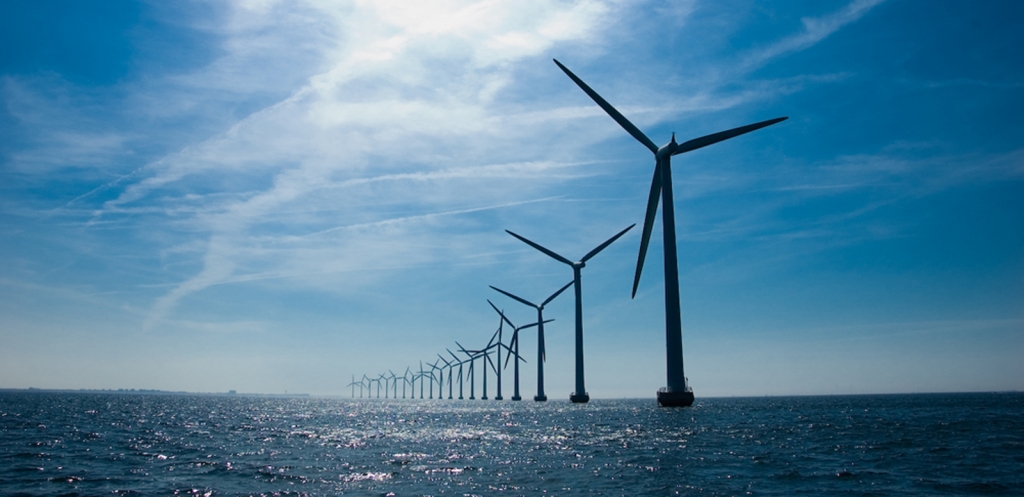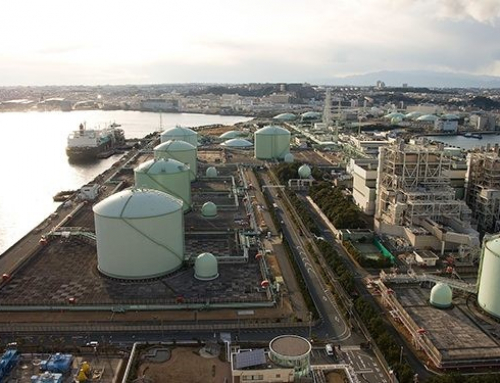
Offshore wind power’s future looks bright. Image: By Cassie Boca on Unsplash
This article first appeared in Climate News Network.Net
by Paul Brown
As turbines grow in size and costs tumble, offshore wind turbines, both floating and fixed to the seabed, have vast potential.
Offshore wind power is set to become one of the world’s largest electricity producers in the next decade as costs fall and turbines grow in size.
Up till now turbines standing on the seabed near to the coast in Europe have been seen as the most promising technology for offshore wind farms. But the success of floating machines that can be deployed in deeper water has meant many more coastal communities can benefit. Japan and the US are among the countries with the greatest potential.
The speed with which the industry has grown in the last decade has defied all expectations. Large turbines used to have a two to three megawatt output, but now the standard size is 7.5 megawatts and turbines capable of generating up to 10 megawatts are in the pipeline.
As a result the output of one offshore turbine is thirty times greater than with the first ones deployed in 1991 − and the cost has fallen to half that of new nuclear power.
This, coupled with experience showing that the wind blows more steadily out to sea and produces far more consistent power than turbines on land, has led many more countries to see offshore wind as a major potential source of renewable energy. The turbines have shown themselves to be robust even in extreme storm conditions.
“Previous estimates of the growth of renewables, at least wind and solar power, have always been underestimates”
Production has just begun from the world’s largest offshore wind farm in the North Sea, where construction started only in January 2018 and which began feeding power ashore in England 13 months later. The project is enormous, all four phases covering nearly 2,000 square miles, and will produce up to 6 GW of power, the same as five large nuclear power stations.
Apart from the sheer size, the plan is to have the whole development completed by 2025, before the partly-constructed Hinkley Point C nuclear power station in the West of England will start up, and providing return on capital for the investors years before its nuclear rivals.
While the market for turbines fixed to the seabed is expected to continue to grow very fast, it is floating turbines that will be the next big player. These are again huge machines, taking advantage of the steadier
winds out to sea, and not needing expensive seabed foundations.
It took 15 years for the Norwegian state oil company Statoil, now rebranded as Equinor to emphasise its partial move to renewables, to develop the first offshore wind farm 15 miles of the coast of Aberdeen in Scotland.
Outrunning expectations
There are five turbines with blades 175 metres long and a counterweight extending 78 metres below the surface, which is chained to the seabed. The turbines started feeding into the grid in October 2017 and output was soon exceeding expectations.
The fact that it was Statoil that designed and developed the floating turbines is significant. The offshore wind industry uses many of the skills developed by offshore gas and oil ventures and provides an investment opportunity for oil majors under pressure to diversify and show they have green credentials.
A report, Wind Power to Spare, produced last year by a research and campaigning group, Environment America, showed that there was enough potential wind power just off the US east coast to provide more electricity than was currently used in the region’s maritime states – plus enough for powering electric cars and for providing heating for the entire population of the eastern coastal states in the future.
Since the report was published developers, looking at the success of Europe in exploiting this resource, have shown an escalation of interest. The same is true of Japan, where the nuclear industry remains in deep trouble as a result of the Fukushima accident in 2011, with many of its reactors not expected to restart.
Potential ignored
Back in Europe, where offshore wind was first developed, manufacturers are eyeing up potential new markets both in the North Sea and elsewhere. France for example has no offshore wind farms but could deploy hundreds of floating turbines.
Research suggests that water depths in the North Sea are ideal for floating turbines. If half the area available could be covered in turbines they would make enough electricity to power the whole EU four times over.
That prediction is made by Equinor. It also estimates in the same report that by 2030 Japan could have 3.5 gigawatts of floating wind power, France 2.9 GW and the US 2 GW, with a further 1.9 GW in the UK and Ireland.
This would make a significant contribution to reducing the world’s burning of fossil fuels, particularly since previous estimates of the growth of renewables, at least wind and solar power, have always been underestimates.

About Paul Brown
Paul Brown, a founding editor of Climate News Network, is a former environment correspondent of The Guardian newspaper, and still writes columns for the paper




